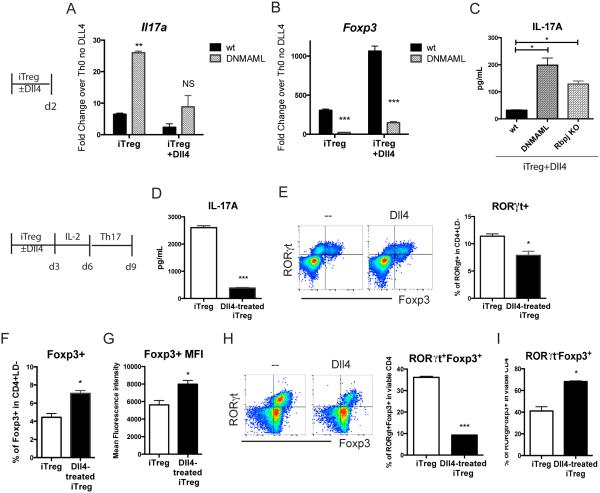Figure 7. Dll4/Notch activated iTreg cells retain Foxp3 expression and are resistant to Th17 skewing in vitro.
A. Splenic naïve CD4 T cells from DNMAML or wild type (wt) B6 mice were skewed toward iTreg for 48 hours. Il17a expression in iTreg culture were measured.
B. Foxp3 expression in iTreg culture were measured by realtime PCR after 48 hours of skewing.
C. IL-17A secretion from iTreg were measured by luminax system after 48 hours of skewing
D. Naïve CD4 T cells from wild type B6 mice were skewed toward iTreg with or without Dll4 stimulation for 72 hours, then rested in 10 ng/mL of IL-2 for another 72 hours. At day 6, 5 × 105 of viable cells were re-stimulated in Th17 conditions. After 3 days, IL-17A in the supernatant was accessed
E. Percentage of RORγt+ in viable CD4 T cells after Th17 skewing
F. Percentage of Foxp3+ in viable iTreg or Dll4-exposed iTreg after Th17 skewing
G. Expression level of Foxp3 in viable Foxp3+CD4 T cells in iTreg or Dll4-exposed iTreg culture after Th17 skewing
H. Naïve CD4 T cells from wild type B6 mice were skewed toward iTreg with or without Dll4 stimulation for 72 hours, then rested in 10 ng/mL of IL-2 for another 72 hours. 5 × 105 of viable Foxp3-eGFP+ cells were sorted out and re-stimulated in Th17 conditions at day 6. After 3 days, the percentage of RORγt+Foxp3+ was determined
I. Percentage of RORγt−Foxp3+ after Th17 re-stimulation on Foxp3-eGFP+ cells

